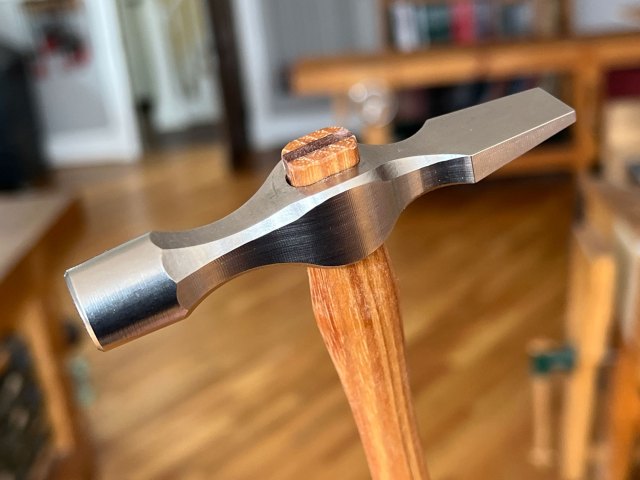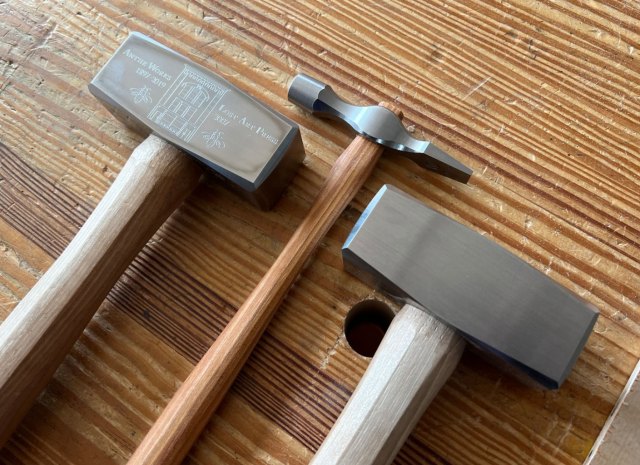Last week I got to examine two Scandinavian workbenches, presumably from the 1600s, that were on display at the Skokloster Castle museum outside Stockholm. Both benches had some interesting details that I had never seen before on workbenches.
A Different Pinch Dog (& Bench Nipple)
The bigger workbench at Skokloster had a massive shoulder vise that has a curious round protrusion as part of the face vise. We got to calling it the “bench nipple.” It looked like a huge bead, and I strongly suspect it was purely decorative.
But you always wonder, did the owner find some use for the nipple? The thing had lost a lot of fights with a saw blade during its life. Though, to be fair, the entire bench was covered with tool marks. These woodworkers were not precious about marring their worksurface.
The other unusual feature of this bench was a forged metal dog that we came to call the “pinch dog.” It fit into the dog holes of the workbench, but it had two peculiar characteristics. It was much longer than the other dogs. And the metal spring of the dog went all the way to the top of the dog. When the dog was pushed into its dog hole, the leaves closed like the jaws of a vise. But they did not close all the way. I suspect the dog was used to pinch thin stock so it could be worked on its edge – planing it or grooving it, perhaps.
The dog could also be used like a standard metal bench dog. It was quite clever, and I might need to chat with a blacksmith about making one.
A Different End Vise
The second bench was much shorter than the first and was equipped with your standard stuff: shoulder vise, tail vise, tool well and a storage locker below.
The curious part of this bench was a third vise located up by the face vise. The vise had a small screw compared to the face vise and tail vise screws. It had a small chop that was fitted with a small dog hole. A matching small dog hole was mortised into the frame. Clearly a piece was missing from this vise that might have answered some questions.
After some thought, I suspect this vise could have been used to pinch wide boards between the small dogs for face planing. As I mentioned, the bench is shorter than I would like. So this would be a way to handle longer boards. Both of these benches were used primarily by joiners who were fitting up the castle with wooden hearths. Plus frame-and-panel trim throughout the structure.
If you have seen a vise like this on an old bench, leave a comment.
— Christopher Schwarz
Like this:
Like Loading...
















